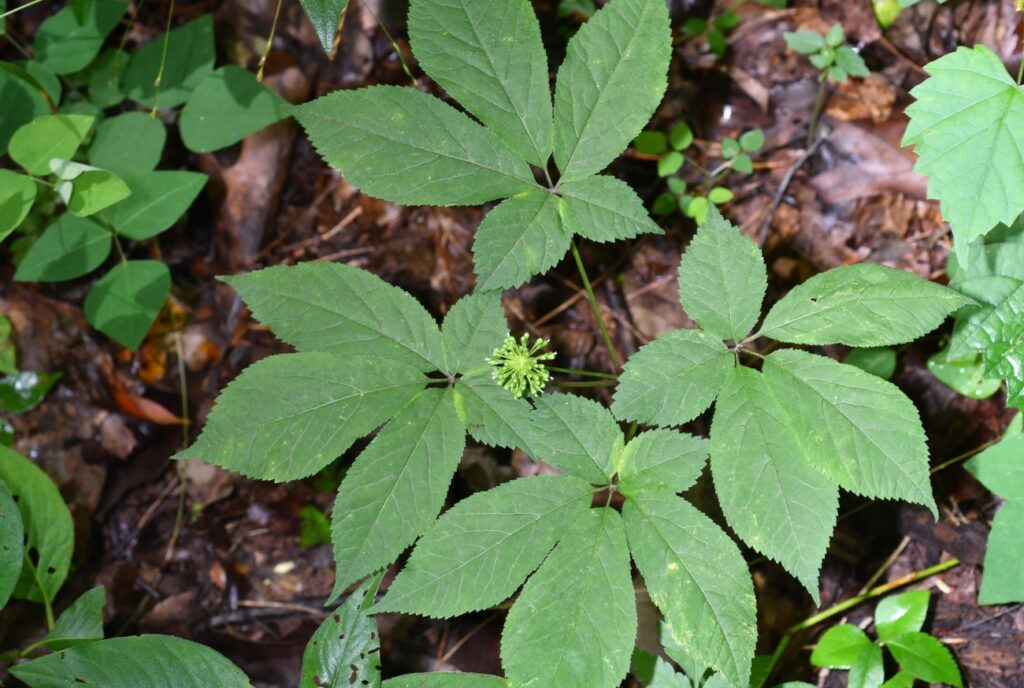Conserving Ginseng and Culturally Significant Plants
go.ncsu.edu/readext?1029503
en Español / em Português
El inglés es el idioma de control de esta página. En la medida en que haya algún conflicto entre la traducción al inglés y la traducción, el inglés prevalece.
Al hacer clic en el enlace de traducción se activa un servicio de traducción gratuito para convertir la página al español. Al igual que con cualquier traducción por Internet, la conversión no es sensible al contexto y puede que no traduzca el texto en su significado original. NC State Extension no garantiza la exactitud del texto traducido. Por favor, tenga en cuenta que algunas aplicaciones y/o servicios pueden no funcionar como se espera cuando se traducen.
Português
Inglês é o idioma de controle desta página. Na medida que haja algum conflito entre o texto original em Inglês e a tradução, o Inglês prevalece.
Ao clicar no link de tradução, um serviço gratuito de tradução será ativado para converter a página para o Português. Como em qualquer tradução pela internet, a conversão não é sensivel ao contexto e pode não ocorrer a tradução para o significado orginal. O serviço de Extensão da Carolina do Norte (NC State Extension) não garante a exatidão do texto traduzido. Por favor, observe que algumas funções ou serviços podem não funcionar como esperado após a tradução.
English
English is the controlling language of this page. To the extent there is any conflict between the English text and the translation, English controls.
Clicking on the translation link activates a free translation service to convert the page to Spanish. As with any Internet translation, the conversion is not context-sensitive and may not translate the text to its original meaning. NC State Extension does not guarantee the accuracy of the translated text. Please note that some applications and/or services may not function as expected when translated.
Collapse ▲ Many of the crops historically grown in Western North Carolina have deep cultural significance. The Cherokee Indians are known for “The Three Sisters,” a system of intercropping corn, beans, and squash, and this tradition is still revered and widely used today. The Cherokee and early European settlers also utilized existing native plants for food, dyes and medicines. The rich forests of the Southern Appalachian mountains provided a variety of useful plants, from American chestnuts and hickory nuts to American ginseng, bloodroot, and goldenseal. While some species were wiped out by invasive disease pathogens such as the Chestnut Blight, others suffered from excessive demand.
Many of the crops historically grown in Western North Carolina have deep cultural significance. The Cherokee Indians are known for “The Three Sisters,” a system of intercropping corn, beans, and squash, and this tradition is still revered and widely used today. The Cherokee and early European settlers also utilized existing native plants for food, dyes and medicines. The rich forests of the Southern Appalachian mountains provided a variety of useful plants, from American chestnuts and hickory nuts to American ginseng, bloodroot, and goldenseal. While some species were wiped out by invasive disease pathogens such as the Chestnut Blight, others suffered from excessive demand.
Many of the high-value plant species, such as ginseng and goldenseal, have been overharvested in the wild to such a degree that there are now laws governing their harvest and sale. Overharvesting has led to isolated populations that can threaten genetic diversity, a key component for any species to remain robust and adaptive. Organisms in the ecosystem that rely upon these plants, such as insects, birds, and a myriad of microscopic organisms, are also negatively impacted when plant communities are lost.
Farmers in the region can help sustain many of these native forest plants by incorporating them into their production systems. This can be done on a variety of scales, from the backyard grower that raises them in cultivated production beds to wild-simulated production that can encompass large areas of forestland. Beyond the financial motivation for growing and selling medicinal plants, many growers want to ensure that these plants remain at the center of beneficial human-plant relationships in the generations to come.
You can learn more about growing medicinal plants through NC State’s Alternative Crops and Organics Program and through groups like the WNC Medicinal Herb Growers, and the Appalachian Beginning Forest Farmers Coalition.
For those interested in American Ginseng, be sure to attend the upcoming workshop happening on October 3, 2024 that will highlight production updates, and provide the opportunity for participants to access ginseng seed.




